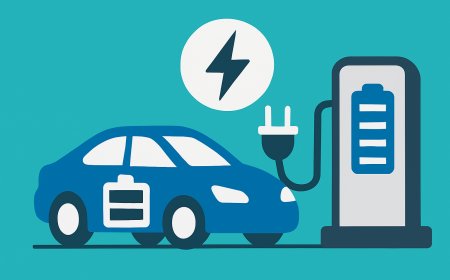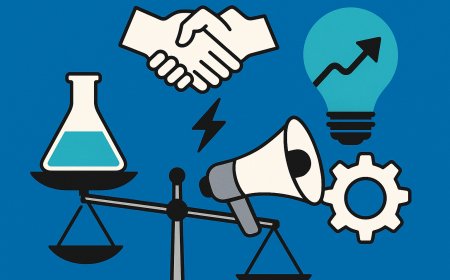The Intriguing Connection Between Age and Temperature: A Tale of Two Lifelines
Discover the fascinating relationship between age and temperature, how they impact each other, and their influence on various aspects of life. Learn about the importance of maintaining a suitable environment for a healthy and comfortable aging experience.

Age and temperature are two of the most essential factors that govern our lives. Age, as we know, is an inevitable aspect of life, while temperature plays a crucial role in maintaining our body's natural balance. It's no surprise that these two phenomena are intricately connected, influencing various aspects of our lives, including our health, comfort, and well-being. In this article, we will explore the fascinating relationship between age and temperature and how they impact each other.
The Human Body's Thermoregulation System
Our body's ability to maintain a stable internal temperature is known as thermoregulation. This is a critical process that ensures our organs and systems function optimally. The body's core temperature is maintained around 98.6°F (37°C), with slight fluctuations throughout the day. Our thermoregulation system relies on various mechanisms, including blood circulation, sweating, and shivering, to balance heat production and heat loss.
As we age, our body's thermoregulation system undergoes changes, making it more challenging to maintain an optimal temperature. Some of these age-related changes include:
1. Reduced metabolic rate: Metabolism slows down with age, resulting in lower heat production. This makes it harder for older individuals to maintain their body temperature, especially in colder environments.
2. Decreased sweat production: Older people tend to produce less sweat, making it challenging to cool down during hot weather or physical exertion.
3. Impaired blood circulation: Aging can lead to impaired blood circulation, which affects the body's ability to distribute heat evenly and maintain a stable core temperature.
4. Thinner skin: The skin becomes thinner and loses its insulating properties, making older adults more susceptible to temperature fluctuations.
Environmental Temperature and Aging
Apart from internal factors, external or environmental temperatures also play a critical role in the aging process. Research has shown that higher ambient temperatures can accelerate the aging process, leading to a higher risk of age-related diseases and conditions. On the other hand, lower temperatures have been associated with increased longevity and slower aging.
The impact of environmental temperature on aging can be explained through various mechanisms:
1. Inflammation: High temperatures can trigger an inflammatory response in the body, leading to cellular damage and increased risk of age-related diseases.
2. Oxidative stress: Exposure to high temperatures can increase the production of harmful free radicals, which cause cellular damage and contribute to the aging process.
3. Telomere shortening: Telomeres are the protective caps at the ends of chromosomes that shorten as cells divide. Studies have shown that exposure to high temperatures can accelerate telomere shortening, leading to cellular aging and a higher risk of age-related diseases.
4. Hormonal changes: Higher temperatures can affect the production of various hormones, including melatonin, which plays a crucial role in the aging process.
Maintaining a Suitable Environment for a Comfortable Aging Experience
Understanding the relationship between age and temperature can help us take appropriate measures to ensure a comfortable and healthy aging experience. Here are some tips to maintain a suitable environment for optimal aging:
1. Keep a comfortable indoor temperature: Ensure that your living space is maintained at a comfortable temperature, ideally between 68°F (20°C) and 72°F (22°C). This range is suitable for most people, including older adults.
2. Dress appropriately: Wear appropriate clothing based on the weather and your activity levels. Choose breathable, moisture-wicking fabrics to help regulate your body temperature effectively.
3. Stay hydrated: Dehydration can affect your body's ability to regulate temperature, especially in older adults. Ensure you drink enough water and consume water-rich foods to stay adequately hydrated.
4. Use cooling and heating aids: Use fans, air conditioners, or evaporative coolers to stay cool during hot weather. In colder environments, use heating aids like space heaters, electric blankets, or heated mattress pads to stay warm.
Age-Related Temperature Changes and Medical Conditions
As we've discussed, age-related changes in temperature regulation can make older individuals more susceptible to temperature-related health issues. Here are some common medical conditions linked to age and temperature:
1. Hypothermia: Older people are more prone to hypothermia, a potentially dangerous drop in body temperature. Hypothermia can occur when the body loses heat faster than it can produce heat, often due to exposure to cold temperatures or wet conditions.
2. Heatstroke: Older adults are at a higher risk of heatstroke, a potentially life-threatening condition caused by prolonged exposureto high temperatures. Heatstroke occurs when the body's temperature rises to dangerous levels and its cooling mechanisms, such as sweating, fail to work effectively.
3. Raynaud's phenomenon: This condition, characterized by the constriction of blood vessels in the fingers and toes, is more common in older adults. Exposure to cold temperatures can trigger Raynaud's phenomenon, causing pain, numbness, and color changes in the affected areas.
4. Seasonal affective disorder (SAD): SAD is a type of depression that occurs due to changes in seasons, particularly during the colder months. Older adults may be more susceptible to SAD due to the combined effects of age-related changes in temperature regulation and reduced exposure to natural sunlight.
To prevent and manage these temperature-related medical conditions, it is crucial to maintain a comfortable environment, dress appropriately, and consult with a healthcare professional to discuss any concerns or symptoms.
Final Thoughts
The relationship between age and temperature is a complex and fascinating aspect of our lives. As we age, our body's ability to regulate temperature declines, making us more vulnerable to temperature-related health issues. Meanwhile, environmental temperatures can influence our aging process, with higher temperatures accelerating aging and lower temperatures promoting longevity.
By understanding this intricate connection, we can take the necessary steps to maintain a suitable environment for a comfortable and healthy aging experience. From keeping a comfortable indoor temperature to staying hydrated and dressing appropriately, these measures can go a long way in promoting well-being and comfort as we age.
So, the next time you feel the warmth of the sun or the chill of the wind, remember the intriguing tale of two lifelines – age and temperature – and their impact on your life.
Disclaimer: The image(s) featured in this article are for illustrative purposes only and may not directly depict the specific concepts, situations, or individuals discussed in the content. Their purpose is to enhance the reader's understanding and visual experience. Please do not interpret the images as literal representations of the topics addressed.
What's Your Reaction?













































































































